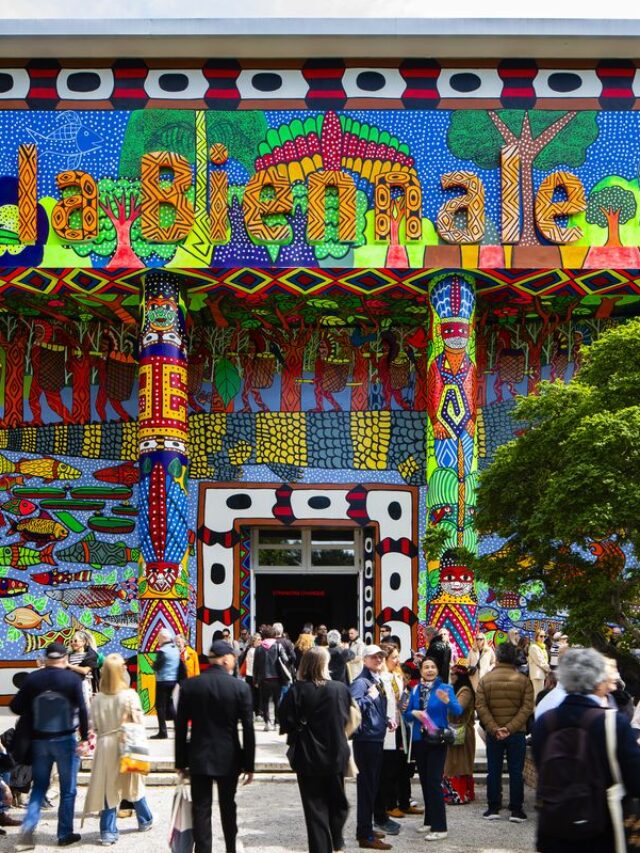As the world gathers in Venice for the 2024 Biennale, the U.S. Pavilion is a lighthouse for innovation and cross-cultural exchange. This year, the Pavilion becomes more than just an exhibition—a vibrant place where identity, innovation, and the arts unite. The United States has the perfect opportunity to present its artistic development and cultural narratives at the Venice Biennale, recognised for honouring modern architecture and art.
The U.S. Pavilion at the 2024 Biennale explores themes of resilience, diversity, and technological growth. A group of forward-thinking artists and intellectuals curates it. The displays showcase voices from many backgrounds and areas, reflecting the unique tapestry of the country. Expect an immersive experience that invites contemplation on America’s place in the world of art in addition to showcasing cutting-edge artwork.
Saliba Douaihy
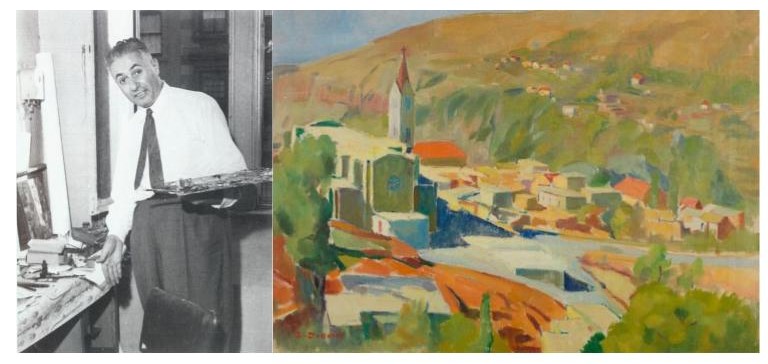 Saliba Douaihy, born in 1915 in the serene town of Ehden, Lebanon, possessed an innate artistic flair that blossomed from his earliest days. His journey as an artist took him from the picturesque landscapes of his homeland to the bustling artistic hubs of Paris and New York City.
Saliba Douaihy, born in 1915 in the serene town of Ehden, Lebanon, possessed an innate artistic flair that blossomed from his earliest days. His journey as an artist took him from the picturesque landscapes of his homeland to the bustling artistic hubs of Paris and New York City.
His experiences and surroundings profoundly influenced Douaihy’s artistic evolution. Commissioned works for churches in Beirut sparked a creative spark that would later ignite his abstract masterpieces. One such masterpiece, “Regeneration” (1974), epitomizes Douaihy’s transition to a flat, minimalist style, honed during his time in the vibrant atmosphere of New York City. Inspired by the renowned Joseph Albers, Douaihy distilled forms into bold, uncomplicated lines.
His paintings from the 1960s onwards reflect a profound exploration of form and space. While subtly nodding to the landscapes of his Lebanese heritage, Douaihy’s art transcends literal depiction. In his work, one might discern echoes of the sky, distant fields, trees, and mountains conveyed through meticulously crafted lines and horizontal bands of colour. Yet, these elements remain suggestive rather than overtly stated, inviting viewers to interpret and engage with their perceptions.
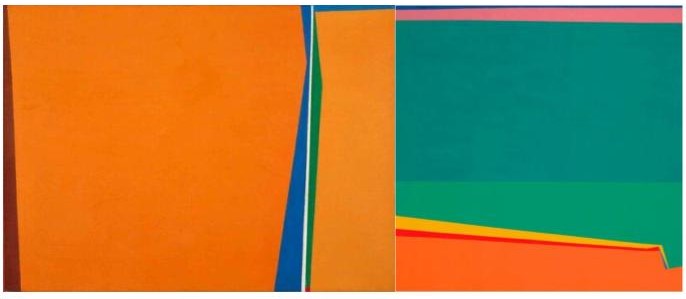 Douaihy found inspiration in the natural world and the linear architecture of churches and Christian symbols. This unique blend of influences infuses his art with a timeless quality, bridging the earthly and the divine. The inclusion of Saliba Douaihy’s work marks a significant debut at the Biennale Arte, offering audiences a glimpse into the rich tapestry of his artistic vision. This vision speaks to the universal language of form, space, and the human spirit.
Douaihy found inspiration in the natural world and the linear architecture of churches and Christian symbols. This unique blend of influences infuses his art with a timeless quality, bridging the earthly and the divine. The inclusion of Saliba Douaihy’s work marks a significant debut at the Biennale Arte, offering audiences a glimpse into the rich tapestry of his artistic vision. This vision speaks to the universal language of form, space, and the human spirit.
Dumile Feni
Dumile Feni, born in Worcester, South Africa, in 1939 and later lived in New York, USA, until 1991, led a life shaped by his artistic passion and political convictions. His journey began in the 1960s as a mural painter and apprentice in Johannesburg. However, the threat of arrest led him to self-imposed exile in London in 1968, eventually settling in the vibrant artistic landscape of New York City.
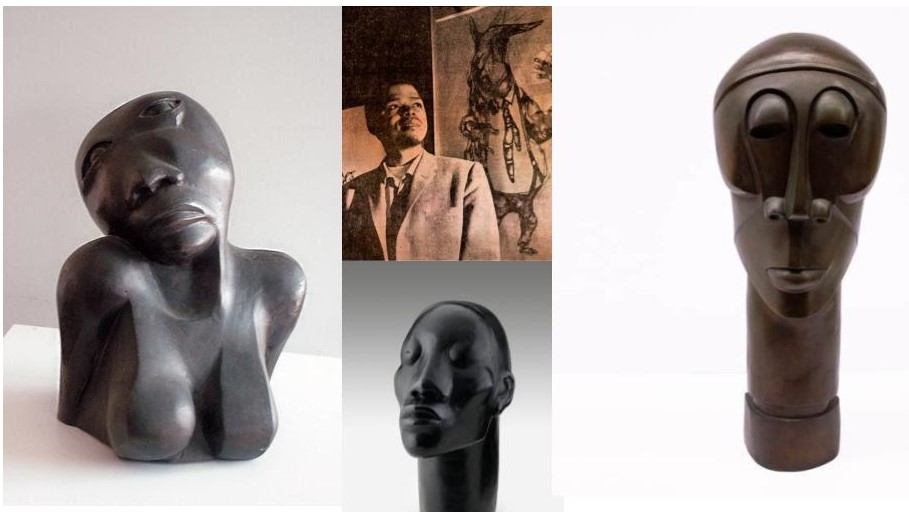 One of Feni’s captivating pieces, “Head” (circa 1981), embodies a recurring theme in his artistry: portraying male figures with elongated faces and necks. This particular sculpture, crafted with bold lines and meticulous attention to detail, captures the essence of the human form with a striking blend of soft curves and precise features reminiscent of Brancusi’s sculptures.
One of Feni’s captivating pieces, “Head” (circa 1981), embodies a recurring theme in his artistry: portraying male figures with elongated faces and necks. This particular sculpture, crafted with bold lines and meticulous attention to detail, captures the essence of the human form with a striking blend of soft curves and precise features reminiscent of Brancusi’s sculptures.
Notably, the forehead and cheekbones of the figure evoke the lines of traditional African masks or ceremonial headgear, adding layers of cultural depth to the piece. Made from bronze, “Head” pays homage to the rich tradition of African woodcarving, infusing contemporary sculpture with echoes of ancestral craftsmanship. For visitors encountering Dumile Feni’s work for the first time at the Biennale Arte, it offers a gateway into a world where artistry intersects with history, politics, and culture. Through his masterful sculpting, Feni invites us to explore the complex layers of identity and heritage, resonating with audiences far beyond the confines of the art world.
Domenico Gnoli
Domenico Gnoli, born in Rome, Italy, in 1933 and later residing in New York, USA, until 1970, was steeped in a world of art and intellect from a young age. Raised by parents deeply immersed in the arts—his father an art historian and his mother a ceramist—Gnoli’s journey into creativity was inevitable. After establishing himself in Rome, he ventured to Paris in 1954 with aspirations of becoming a theatre set designer.
 One of Gnoli’s standout works, “Sous la chaussure” (1967), encapsulates his distinctive artistic style—a mesmerizing blend of hyperrealism and surrealism. Inspired by Renaissance masters and metaphysical painting, Gnoli’s meticulous attention to detail borders on the hallucinatory. His fascination with everyday objects, particularly shoes, is evident in his work. Gnoli transforms mundane elements like hair, buttons, and collars into enigmatic focal points through exaggerated magnification.
One of Gnoli’s standout works, “Sous la chaussure” (1967), encapsulates his distinctive artistic style—a mesmerizing blend of hyperrealism and surrealism. Inspired by Renaissance masters and metaphysical painting, Gnoli’s meticulous attention to detail borders on the hallucinatory. His fascination with everyday objects, particularly shoes, is evident in his work. Gnoli transforms mundane elements like hair, buttons, and collars into enigmatic focal points through exaggerated magnification.
In “Sous la chaussure,” the viewer is drawn into a world where reality intertwines with the surreal. The contrast between the intricate stitching of the shiny black shoe and the progressively thinner stripes of the background creates visual tension, blurring the boundaries between perception and imagination. The title “Under the Shoe” hints at the unseen, inviting contemplation on hidden depths and concealed meanings. It evokes a sense of melancholy, reminiscent of the Italian expression “having your spirits under your heels,” adding a poignant layer to the painting’s narrative.
For those encountering Domenico Gnoli’s work, it offers a gateway to a realm where the ordinary becomes extraordinary, inviting viewers to explore the profound within the mundane. Gnoli’s legacy transcends artistic boundaries, resonating with audiences through its universal themes and evocative imagery.
Costantino Nivola
Costantino Nivola, a versatile artist known for his sculptures, murals, and designs, led a remarkable life that spanned continents and cultures. Born on July 5, 1911, in Sardinia, Italy, he embarked on his artistic journey before seeking refuge from Fascism in Paris in 1938, eventually settling in the United States in 1939.
 Nivola’s most notable works are his abstract, large-scale architectural reliefs in concrete, which he created using his unique sand casting and cement carving techniques. These striking pieces adorned buildings across America from the late 1950s to the early 1970s, leaving an indelible mark on the architectural landscape.
Nivola’s most notable works are his abstract, large-scale architectural reliefs in concrete, which he created using his unique sand casting and cement carving techniques. These striking pieces adorned buildings across America from the late 1950s to the early 1970s, leaving an indelible mark on the architectural landscape.
One of Nivola’s crowning achievements was the creation of a monumental bas-relief for the Olivetti Showroom on Fifth Avenue in New York in 1954. This masterpiece, inspired by his childhood memories of playing with his children on Long Island beaches, marries elements of prehistoric Sardinian figurines, traditional carnival masks, and the totemic cultures of Native Americans as interpreted by the New York School. Integrating seamlessly with the architectural vision of the Milan studio BBPR, Nivola’s bas-relief exudes a timeless Mediterranean charm. It resides at Harvard University’s Science Center today, serving as a testament to Nivola’s enduring legacy.
 As the maquette showcased alongside his more significant creations, Nivola’s smaller-scale works possess a captivating ambiguity. The juxtaposition of a spiky chest and a black-masked face evokes emotions, from amusement to unease, inviting viewers to contemplate the complexities of human expression and experience. Costantino Nivola’s story is about resilience, creativity, and cultural exchange. He bridged continents and cultures through his artistry, leaving behind a work that inspires and intrigues audiences worldwide.
As the maquette showcased alongside his more significant creations, Nivola’s smaller-scale works possess a captivating ambiguity. The juxtaposition of a spiky chest and a black-masked face evokes emotions, from amusement to unease, inviting viewers to contemplate the complexities of human expression and experience. Costantino Nivola’s story is about resilience, creativity, and cultural exchange. He bridged continents and cultures through his artistry, leaving behind a work that inspires and intrigues audiences worldwide.
Joseph Stella
Joseph Stella, an Italian-born artist who made his mark in America, is best remembered for his captivating portrayals of modern American life in the early 20th century. Among his notable works, “Fountain” (1929) is a vibrant example of his exuberant style. Stella’s paintings are characterized by their lively, stylized compositions adorned with various birds, plants, and flowers. These elements reflect his profound connection to nature, which he viewed as a source of spiritual inspiration. While his cityscapes capture the essence of urban modernity, his depictions of nature harken back to more primal and picturesque landscapes, deeply influenced by his romanticized memories of Italy.
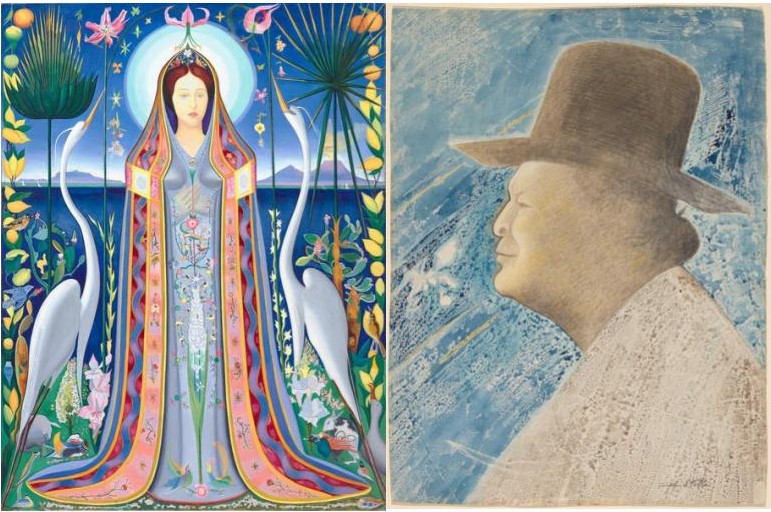 In “Fountain,” Stella centres the composition around a majestic fountain, its cascading streams mirrored by the graceful branches of a towering tree. The tranquil scene is further enriched by a reclining nude figure, a swan, and a lotus flower, all in an idyllic setting. Through recurring motifs and romantic imagery, Stella’s paintings invite viewers to contemplate nature as both an escape and an oasis—a sanctuary from the pressures of modern life. His work suggests a longing for renewal and creative inspiration in the natural world’s serene beauty.
In “Fountain,” Stella centres the composition around a majestic fountain, its cascading streams mirrored by the graceful branches of a towering tree. The tranquil scene is further enriched by a reclining nude figure, a swan, and a lotus flower, all in an idyllic setting. Through recurring motifs and romantic imagery, Stella’s paintings invite viewers to contemplate nature as both an escape and an oasis—a sanctuary from the pressures of modern life. His work suggests a longing for renewal and creative inspiration in the natural world’s serene beauty.
Joseph Stella’s legacy endures as a testament to the enduring power of art to capture the essence of the human experience and evoke emotions that resonate with audiences of all backgrounds. Through his masterful compositions, he invites us to explore nature’s timeless beauty and tranquillity, offering respite and reflection amid our busy lives.

Jain Syriac Babu is a Kerala-born, Italy-based theatre artist and art enthusiast.


